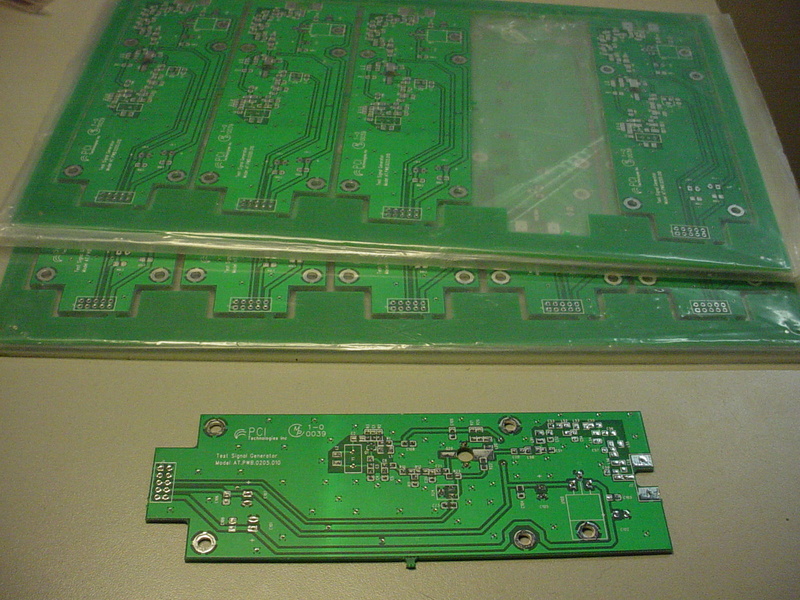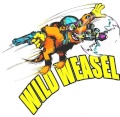Log in
Search
Latest topics
» My N-1R build logby roddie Today at 12:32 am
» Happy 77th birthday Andrew!
by akjgardner Today at 12:27 am
» TEE DEE Having issues
by TD ABUSER Yesterday at 9:43 pm
» Landing-gear tips
by roddie Yesterday at 6:17 pm
» Roger Harris revisited
by TD ABUSER Yesterday at 2:13 pm
» Tee Dee .020 combat model
by Ken Cook Yesterday at 1:41 pm
» Retail price mark-up.. how much is enough?
by Ken Cook Yesterday at 1:37 pm
» My latest doodle...
by roddie Yesterday at 10:43 am
» Chocolate chip cookie dough.........
by roddie Fri Nov 22, 2024 1:13 pm
» Purchased the last of any bult engines from Ken Enya
by sosam117 Fri Nov 22, 2024 11:32 am
» Free Flight Radio Assist
by rdw777 Fri Nov 22, 2024 9:24 am
» Funny what you find when you go looking
by rsv1cox Wed Nov 20, 2024 3:21 pm
Cox Engine of The Month
Printed Circuit Boards
Page 1 of 1
 Printed Circuit Boards
Printed Circuit Boards
I obtained some small boards from work which are totally flat with only "tracer-circuitry" running through them. The board-thickness is .067" (1.7mm).

I'd read somewhere that this type of stock can be used for C/L bellcranks. It's very strong/rigid material.
I'm not sure how easy it is to cut through this stuff.. but it would be interesting to trace a bellcrank profile onto it.. and try using a scroll-saw to at least rough it out. A bearing is easily made from alloy-tube and some flat-washers.
Have any of you heard about or tried this?

I'd read somewhere that this type of stock can be used for C/L bellcranks. It's very strong/rigid material.
I'm not sure how easy it is to cut through this stuff.. but it would be interesting to trace a bellcrank profile onto it.. and try using a scroll-saw to at least rough it out. A bearing is easily made from alloy-tube and some flat-washers.
Have any of you heard about or tried this?
 Re: Printed Circuit Boards
Re: Printed Circuit Boards
Other than weight, there is no reason the FREE stock you have won't work
What most guys use is the Raw circuit boards without any lead or copper traces....bread board stuff with or without a grid of through holes
You can cut control horns or even engine pads from your stock
It will also stack with thin skim of epoxy to make thicker and (caution*) sand down to thinner
at work look for some of the 1980s older BIG 18" x 18" (or larger) computer cards or main boards.... fairly thick but usually had several 4"x 5" areas totally un-populated--- just good big areas of material to cut to shapes
* use respirator!!!
What most guys use is the Raw circuit boards without any lead or copper traces....bread board stuff with or without a grid of through holes
You can cut control horns or even engine pads from your stock
It will also stack with thin skim of epoxy to make thicker and (caution*) sand down to thinner
at work look for some of the 1980s older BIG 18" x 18" (or larger) computer cards or main boards.... fairly thick but usually had several 4"x 5" areas totally un-populated--- just good big areas of material to cut to shapes
* use respirator!!!

fredvon4- Top Poster


Posts : 4012
Join date : 2011-08-26
Age : 69
Location : Lampasas Texas
 Re: Printed Circuit Boards
Re: Printed Circuit Boards
roddie wrote:I obtained some small boards from work which are totally flat with only "tracer-circuitry" running through them. The board-thickness is .067" (1.7mm).
I'd read somewhere that this type of stock can be used for C/L bellcranks. It's very strong/rigid material. I'm not sure how easy it is to cut through this stuff.. but it would be interesting to trace a bellcrank profile onto it.. and try using a scroll-saw to at least rough it out. A bearing is easily made from alloy-tube and some flat-washers. Have any of you heard about or tried this?
If it is a true fiberglass board it ought to work. If it is a material such as phenolic, then material is weaker and probably not worth trying. Give it a shot, tug, bend. If you have a CL model with bellcrank exposed, would be easy to test.
Back when I worked at McDonnell Douglas in the 1980's, we'd send minicomputer boards in for repair. They were multilayer trace (wiring levels embedded within the layers). If broken trace could not be jumpered, repairer would locate broken trace, mill down to the trace and repair it. Simpler boards might have 4 internal traces, but I heard as many as 10 layers. Due to expense of manufacturing multi-trace level boards, you'd only see this on more expensive equipment such as mini-computers, mainframes, aircraft avionics, etc.

GallopingGhostler- Top Poster


Posts : 5724
Join date : 2013-07-13
Age : 70
Location : Clovis NM or NFL KC Chiefs
 Re: Printed Circuit Boards
Re: Printed Circuit Boards
Cutting fiberglass FR4 circuit circuit boards is hard on blades. If you can get the round carbide blades for the scroll saw they might last longer. We have circuit boards at work that are close to 30 layers with blind and buried vias that are close to 1/4 inch thick. These cost $8000 before any parts are put on.

Jason_WI- Top Poster


Posts : 3123
Join date : 2011-10-09
Age : 49
Location : Neenah, WI
 Re: Printed Circuit Boards
Re: Printed Circuit Boards
Jason_WI wrote:Cutting fiberglass FR4 circuit circuit boards is hard on blades. If you can get the round carbide blades for the scroll saw they might last longer. We have circuit boards at work that are close to 30 layers with blind and buried vias that are close to 1/4 inch thick. These cost $8000 before any parts are put on.
Jason, thanks for the update. When I worked in the scientific computer aerospace industry 35 years ago, real men programmed in FORTRAN (and assembly) and quiche eaters wrote in PASCAL.
inf.ed.ac.uk: Real Programmers Don't Use PASCAL
We were still dealing with much stuff made in low and medium scale integrated circuits with a lot of discrete components. When I arrived at McDonnell Douglas in 1982, I remembered an old SEL hybrid analogue data acquisition computer for aircraft structural testing. It had 8 kb of ferrite bead core memory that the engineers and techs had upgraded with another bank of 8 or 16 kb static ram. It had just been removed from service (took up about 8 wall locker sized double cabinets). John, one of the techs would enter the boot loader via a line of binary toggle switches on the front panel, which then loaded the OS and application software from paper tape.
Our laboratory data computer was a then new Perkin Elmer 3240. I think it was 4 mips, with two 300 mb mulitplaten disk packs and 3 "high speed" 1600 bpi drives. It had a total of 16 mb dynamic ram. Each 4 mb board was about 2 feet square populated with 2kx1 or 4kx1 IC ram chips. High speed communication was via 1200 Baud modem. For tests we used smaller P-E 3220's (1 mip machine) and 3230's (2 mips I think) with 1 to 2 mb ram. 3230 was used for more demanding tests and had a higher capacity 30 mb hard disk the size of 2 shoe boxes.
Regarding cutting PC boards, I'd say yes if they are that thick. However, we're only talking material that is about 1/16" thick and small quantities, which a fine hacksaw blade (suitable to cutting EMT) would be able to cut.


GallopingGhostler- Top Poster


Posts : 5724
Join date : 2013-07-13
Age : 70
Location : Clovis NM or NFL KC Chiefs
Page 1 of 1
Permissions in this forum:
You cannot reply to topics in this forum

 Rules
Rules







